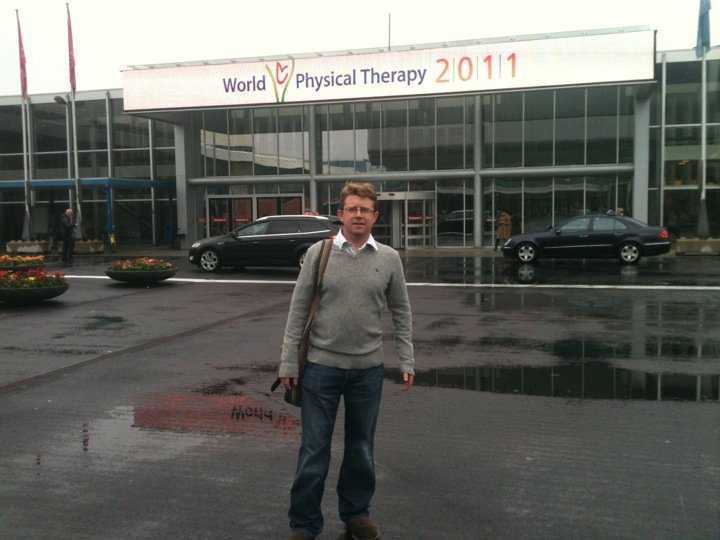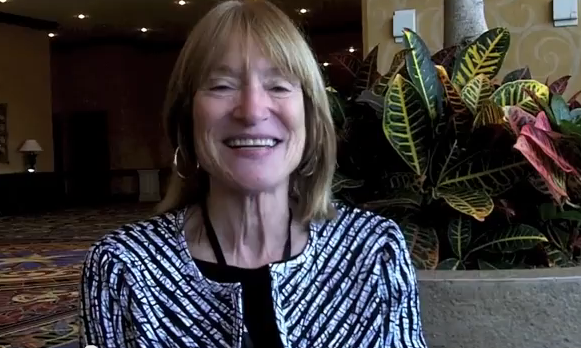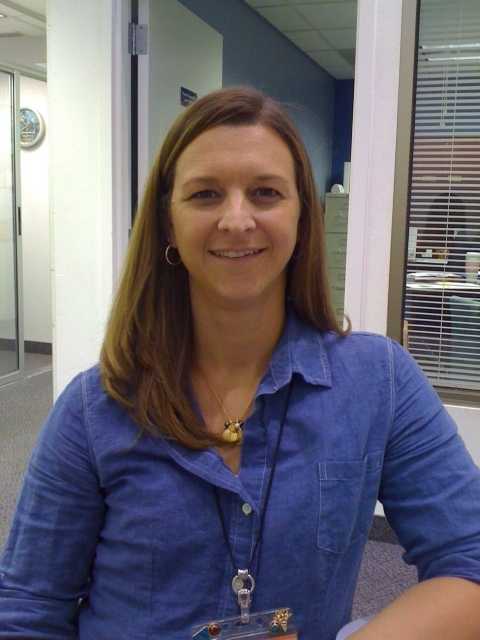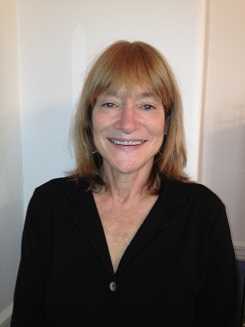
Last August, H&W sponsored a brand-new course, Biomechanical Assessment of the Hip & Pelvis: Manual Movement Therapy and the Myofascial Sling System. This course is written and instructed by Steve Dischiavi, MPT, ATC, MTC, CSCS, and covers advanced training in hip and pelvic biomechanics, functional “slings” created by the myofascial system, and use of high level sports medicine theory and applied science.
The course received excellent feedback from participants, so we are thrilled to be offering this course again in 2014. The course will be offered: August 16-17, 2014 in Arlington, VA. We sat down with Steve to see what he learned from his first time teaching with H&W, and what participants can look forward to in 2014.
PRR: You taught this course for H&W for the first time in 2013. What did you learn from your first time teaching this course with H&W?
I honestly was pleasantly surprised. The initial goal of the class was to bring a sports medicine approach to the women’s health arena. I really wanted the women’s health therapist to see how important that specialty area is to orthopedic and sports medicine type clients. The feedback was great. The class was made up mostly of traditional women’s health type therapists who treat women’s health clients almost exclusively. There were a couple of people who do women’s health and ortho clients and there were a couple sports medicine outpatient orthopedic therapists. The whole spectrum of clinicians was represented and the feedback was just as I hoped it would be. The woman’s health PTs seem to take away a lot of the exercises and maybe gave some consideration to the theory I was presenting. I felt the class was engaged and offered great questions. The thing I learned the most after my first class with Herman & Wallace is that there is a place for this class at H&W and hopefully more outpatient orthopedic PTs will take this class and realize their traditional approaches need to have more of a women’s health influence or they will be missing a huge opportunity at better outcomes with their clients.
Were there any surprises? How did feedback from participants inform the evolution of this course as you prepare to teach in 2014?
The biggest surprise to me was that the class was almost all traditional women’s health PTs. I thought there would be more sports medicine type therapists. I think this will take time because I don’t think the traditional sports medicine PT would look to H&W for continuing education. This is exactly the reason for this class. I am very excited, passionate, and proud to be representing H&W as they help the sports medicine and orthopedic PTs integrate more of the realm of women’s health into their existing practice patterns.
What were the most common questions asked by participants during the course? How does the course address frequent questions/misconceptions therapists might have about this topic?
Most everyone in the course wanted me to continually give examples and discuss cases that were not professional athletes. I work with a pro sports team so the majority of my videos and case examples come from this population. I have tried extremely hard to make sure the theories and ideas I am presenting can be extrapolated to the young and elderly clients. I have done a better job integrating videos from these populations and taking time to extrapolate the exercises progressions for all patient populations. This will continue as I tweak the class materials and I am aware of this and I do make specific efforts to make sure the course covers all ages.
This class is based in human movement and neurology: something all of our clients have in common. There are a great number of examples from the athletic community in the class but this is only because these are the types of clients I work with on a daily basis. As I mentioned I have used clients in my private practice who are both young and old and tried to use these clients as examples as well. This way the class participant can see the thoughts, theories, and exercises with clients of all ages.
If you'd like to read what a past participant thought of her experience at this course, check out the Pelvc Rehab Report by guest blogger Janna Trottier, PT, DPT, CSCS. If you'd like to hear more from Steve, consider joining us in August for this course.

This June, H&W is thrilled to be partnering with our dear friend, Fatima Hakeem, PT to bring a new course, The Business of Pelvic Rehab, to Denver, CO! This two-day course is intended for the clinician establishing or currently operating a women's health practice who would like to learn concrete skills for running his/her practice, including how to create a Business Plan, marketing to the community as well as physicians and hospital administrators, and recruiting and managing staff.
We sat down with Fatima to hear more about this great, new course.
PRR: What inspired you to create this course?
FH: For several years, I have been receiving calls and emails from therapists regarding the administrative piece of running a women’s health practice: questions on marketing, billing, regulatory requirements and business planning as they relate to women’s health. In addition, instructors that teach clinical courses consistently share with me that questions about the “admin” piece come up in every course. This course is a way to meet with these therapists face to face and help them start up and grow their women’s health service lines.
What resources and research were used when writing this course?
There are several text books on employee satisfaction, marketing to women, business planning, from which I have taken information and made it relevant to women’s health. I have attended several seminars put on by the Private Practice Section and bought several of their publications. I also have completed Billing and Coding courses.
Most importantly, I have set up two women’s health practices from “scratch” and have many years of experience dealing with regulatory requirements, physicians and patients. I have to say the mistakes I have made setting up two practices “from scratch” have been on my list of things to share with participants.
What can you tell us about this course that isn't covered in the description and objectives?
The course is designed, above all, to be practical and problem solving. We will spend time doing “labs”, meaning participants will not only leave with didactic information but with outlines of Business Plans and Marketing Plans.
Why should a therapist take this course? How can these skill sets benefit his/ her practice?
To have an effective practice that is financially viable, the business goals/skills and the clinical services must move in parallel. This seminar will help the therapist PLAN and EXECUTE a clinical women’s health program. The clinical courses offered are fabulous and allow the therapists to leave the courses with ready- to- implement clinical skills. However, those therapists may then find themselves stuck on the administrative aspects related to billing, G Codes, how to convince physicians to refer patients, how to handle patient complaints, and how to meet the corporate goals of productivity and quality. The skills learned in this course are effective, easy to implement and will help minimize these mistakes that are so easy to make along the way.
Want to learn more from Fatima? Join us in Denver in June!

In 2013, H&W debuted a brand new course on Rehabiltation for the Breast Oncology Patient. This coming year, we are thrilled to be offering this course on the West Coast, in San Diego in April. Pelvic Rehab Report talked to course author and instructor Susannah Haarmann, PT, CLT, WCS about what she learned from teaching this course for the first time and what she looks forward to sharing with participants this year.
PRR: You developed and started teaching this course for the first time in 2013. What did you learn from your first time teaching this course?
SH: I learned that the breadth of topics that ought to be covered in order to present a holistic approach to rehabilitation and breast oncology is gigantic! I was inspired to teach this course because, from my perspective, in most clinics and hospitals, the vast concerns of breast survivors regarding physical well-being and quality of life are not being addressed. I turned to mentors for guidance, but their knowledge had holes. I probed the research, but the information pertaining to rehabilitation seemed disjointed. I sought out continuing education, however, the topics covered were not as complete and detailed as I would have preferred.
In summary, I learned teaching in 2013 that I bit off a lot to chew! Feedback from the course was largely optimistic, however, I have made huge modifications. The course material has been reorganized from a 3-day to 2-day course. Although the course is still steeped in research, the content has been stream-lined. I have also included more labs with pertinent case scenarios for didactic learning and skills development.
Were there any surprises? How did feedback from participants inform the evolution of this course as you prepare to teach in 2014?
I was surprised by the variability in course participants! There were physical therapists and occupational therapists, women’s health practitioners, travelling physical therapists and certified lymphedema therapists, outpatient practitioners and acute care therapists…the perspectives that we had during the debut course was incredible! I treat breast cancer survivors on an outpatient basis, but feedback from the acute care therapists helped me address post-surgical and inpatient issues. Furthermore, I am a certified lymphedema therapist (CLT) trained by the Norton School of Lymphedema, however, there were also Leduc trained CLTs present as well. Interacting with these practitioners broadened my awareness of lymphedema treatment approaches.
Finally, the labs included in this course are broad in scope; they require us to pull from our basic knowledge of cardiopulmonary, integumentary and neuromuscular systems knowledge. Many participants were glad to sharpen their skills in orthopedic testing of the shoulder or vitals assessment and interpretation. In order to be experts, sometimes we have to perfect the basics- Be prepared to call on your generalist wisdom!
What were the most common questions asked by participants during the course? How does the course address frequent questions/misconceptions therapists might have about this topic?
I would say that many of the therapists were inspired by the idea of a health care team that became familiar with the client from the time of diagnosis through the ‘re-entry’ phase into long-term survivorship. Participants wanted to know how to facilitate the practice of the prospective surveillance model in their communities and develop relationships with physicians.
I think that a frequent misconception about breast oncology rehabilitation is that it just addresses lymphedema. In most cases, all bodily systems are affected by treatments related to breast cancer; some rear their heads during the acute phase, whereas other side effects become noticeable with the aging process. We as rehabilitation professionals are able to work with various body systems across the continuum of care. If you take this course be prepared to learn about treating post-surgical side effects such as lymphatic cording, muscle imbalances and post-mastectomy pain syndrome. Get ready to dig into treating side effects of chemotherapy such as peripheral neuropathy, fatigue, osteoporosis and dyspareunia. Learn about rehabilitation considerations pertaining to radiation such as integumentary and potential cardiopulmonary changes. But, we won’t stop there! Behind every ‘body’ is a person; you will also be exposed to what the research says about how medical interventions can affect the psyche and how methods such as mindfulness based stress reduction can not only improve personal well-being, but also affect cancer outcomes.
Want to learn more from Susannah? Check her out in San Diego, April 12-13!
At the end of this month, Herman & Wallace instructor Michelle Lyons, BSc Physio, PT, MISCP will be teaching our Pelvic Floor Level One course at Coventry University in the United Kingdom.
H&W teamed up with Gerard Greene, MSc (Manip Physio), MMACP, MCSP, PG Cert HEd to put on this course. Below is a guest blog from our friend across the pond, Gerard, about his experience putting on an H&W PF1 event:
There has been a lot of buzz and excitement in UK Physiotherapy circles about the first Herman & Wallace PF1 course.
The majority of Physiotherapists attending this course will be from England, but we also have participants flying in from Northern Ireland, Portugal and Cypress. The participants have a range of clinical backgrounds, including working in the UK National Health Service (NHS), private hospitals and private practice. There will also be some University- based Physiotherapy lectures. What will really make the PF1 course unique will be the attendance of some Midwifery Lecturers. It is hoped that the Physiotherapy/ Midwifery synergy on the course will lead to some joint projects in 2014, which will only further improve patient care and outcomes.
Women’s Health in the UK has been getting increasing profile in both the media and the professional literature with two key publications recently on NICE guidelines for Stress Incontinence and a Cochrane review for management of Pregnancy related pelvic and LBP.
As the course organiser, I was able to generate a lot of energy and momentum around the course through the use of social media such as Twitter, Facebook and Linkedin. Although the Twitter community around pelvic rehab and women’s health physiotherapy is well established in the USA and Australia, it is in it’s infancy in the UK.
Patterson Medical, the biggest supplier of Physiotherapy and rehab equipment in the UK, will be supplying the EMG devices so that participants can learn to use this modality.
Michelle and I also share an Irish connection, as we both graduated from Physiotherapy School in Dublin, Ireland in 1994; Michelle from University College Dublin and me from Trinity College Dublin. Although both Universities were seen as traditional rivals, in the Physiotherapy world this common ground has been a real bonus in the development of our professional relationship. Michelle is a recognized expert in Women’s Health Physiotherapy and she and I have worked closely in organizing the UK course, as well as further plans for the development of Women’s Health Physiotherapy education and training in the UK in 2014. Working with instructor Michelle Lyons, and H&W team members Siv Prince and Derek Huff has been a very positive and energizing experience, and I’m already looking forward to the next joint event.

Gerard has a musculoskeletal physiotherapy background and has taught and delivered Physiotherapy courses in Ireland, N Ireland, England, Scotland, Wales, Turkey and Jordan. Gerard is looking forward to doing some further teaching in the Middle East and the USA next year. He also lectures on the MSc Manual Therapy Programme in Coventry University which has a national and international reputation for excellence. H&W is very much looking forward to working with him on this course and in the future!

Following H&W founder Holly Herman's amazing presentation at the North American Menopause Society's Annual Meeting, Holly sat down with Dr. Mache Seibel to talk pelvic rehab and the role of the PT in treating patients with bladder, bowel and sexual dysfunction.
You can watch the interview HERE
According to NAMS, the attendance at the annual meeting was over 70% physicians and 13% nurses. Physical therapists and "other professionals" made up only 8% of attendace, so kudos to Holly for spreading the gospel about the important role of the PT in women's health!
Want to catch more Holly? She'll be teaching Pelvic Floor Level One, Pelvic Floor Level Three, Care of the Pregnant Patient, Care of the Postpartum Patient, and Peripartum Special Topics in 2014!
Since launching the application for our Pelvic Therapy Practitioner Certification (PTPC) exam, we've had a lot of questions about the difference between a course certificate - like the CAPA certificates awarded to participants at our courses - and a certification, which is what PTPC is.
At our Pelvic Floor series, Pregnancy and Postpartum series, Visceral, Movement Systems, and other specialty courses, there are Certificates of Academic Profficiency Achievement (CAPA) that are given out at the end of the courses after participants complete a CAPA pre- and post-test. These are certificates of completion, not a certification. A certificate like this attests to attendance at a given continuing education course and passage of a short test that is not developed to any psychometric standards.
A certificate that recognizes completion of a course is different than a professional designation awarded based on passage of an exam developed with rigorous psychometric standards, like PTPC. A certificate is usually based on a short pre and post test created by the course instructor. While these test are an important part of a course, such tests are not developed to "legally definsible" exam developmet standards. A properly designed certificaiton process, followed to legally definsible standards, is created to scienficially measure a candidates' knowledge relative to a "minimally acceptable candidate" - as defined by the exam developers. Certifying bodies, offering certifications developed to such stanards, often empower earners of a certification to ammend their professional title with an abbeviation to denote their demonstrated expertise. Without having completed all the steps (of which there are many) in a legally definsible exam development process, entities empowering others to ammend their professional titles through any other process do so under potential legal liability.
By definition, all Herman & Wallace continuing education courses are designed to instruct in immediately-applicable, evidence-based knowledge and skills so that therapists will be welll-trained to treat patients in the clinic. It is not required that one earn this certification to be an excellent therapist or to practice pelvic rehabilitation. Therapists should complete continuing education courses wilh the goal of growing his or her knowledge and clinical skill set.
PTPC is an exam for experienced pelvic therapists to validate their skill set and knowledge. We created this certification so the rehabilitation professionals who do want to distinguish themselves by ammeding their professional title with "PTPC" have an option to sit for a test that covers pelvic dysfunction, for men and women, throughout the life cycle. Prior to Herman & Wallace launching this certification, no specialty certification recognizing rehabilitional professionals treating women AND men of all ages experiencing pelvic dysfunction.
Some therapists value certifications more than others, so it's entirely up to the individual whether to pursue PTPC, or any other certification. Our goal is that PTPC becomes the gold standard of quality in the field of pelvic rehabilitation, and that it helps spread awareness about the important work pelvic rehabiltation professionals do. If you would like more information about the Pelvic Therapy Practitioner Certification or would like to download the application, please see our Certification Page.

Janna Trottier, PT, DPT, CSCS recently attended our Biomechanical Assessment of the Hip and Pelvis in Tampa, FL, taught by Steve Dischiavi, MPT, DPT, ATC, COMT, CSCS. Here's what she had to say about this course:
Last month I attended the course “Biomechanical Assessment of the Hip and Pelvis.” It was created and instructed by Steve Dischiavi, MPT, DPT, ATC, COMT, CSCS. I was drawn to the program because I was looking for an SI course that was comprehensive including evaluation and treatment as well as a functional application for treatments. It was advertised through Herman and Wallace.
I have been an orthopedic/sports physical therapist for 15 years and have been specializing in OB physical therapy for 6 years. I was interested in expanding my knowledge of core stability into functional movements. I was also intrigued that this “Women’s Health” course was going to be taught by a male who was a Sports Physical Therapist/Athletic Trainer for the Florida Panthers NHL Hockey Team as well as a private practice owner. There are also very few Women’s Health courses available in South Florida where I practice.
Immediately from his introduction, Steve drew the connection between myofasical stability and pelvic pain. All of the other course participants were female pelvic therapists with the exception of my husband who is an orthopedic sports physical therapist. This was fantastic because it allowed for great discussion about treatment techniques specific to Women’s Health.
I have been to many great SI and Women’s Health courses over the years and usually the goal is to take home 1-2 clinical pearls to use in your practice. However after this course with Steve, I felt as though I came away with an entire day full of “pearls”. I enjoyed that this course was not entirely pelvic floor based, butstill completely relevant to the Women’s Health population. He really focused on functional movement and evaluation for SI instability and lumbar core stability as well as incorporating many different treatment philosophies while blending his own.
The day after the course, I returned to my clinic and used his techniques on a 75 year old male patient with LE strength and stability dysfunction. Within the first treatment, there was marked improvement in his gait stability. After 2 treatments, he was able to leave his cane at home! It was really fantastic that I was able to utilize Steve’s techniques immediately in the clinic with rapid results. This was especially exciting since clinicians are encouraged to make fast improvement with declining visit limits. I have since been using Steve’s theories with many different patient populations – but especially our Women’s Health population. I would highly recommend Steve’s course to any practicing Women’s Health therapist as well as any orthopedic physical therapist.
H&W is thrilled to announce that we have completed one more giant step in the process of developing our certification exam, the Pelvic Therapy Practitioner Certification (PTPC) exam.
Over the past few weekends, our team of Subject Matter Experts met in Seattle to painstakingly go through all 450 items (exam questions) for clarity, correctness and other conventions. This was a massive project and we are thrilled to have gotten over this hurdle.
Now that all items have been reviewed, we are only a few steps away from beta testing the first offering of the exam.
Stay tuned - as we will be making the application for beta testers available shortly!
The Pelvic Therapy Subject Matter Experts enjoy the Seattle sunshine!

Our own Holly Herman, DPT PT MS OCS WCS BCB-PMD, is adding two more initials to her credentials.
She has met the criteria for the International Society for the Study of Women's Sexual Health (ISSWSH) Fellowship and is approved to use the designation IF after her name, making her one of only three PTs in the world to hold this title (the others are H&W friends Amy Stein and Talli Rosenbaum).
Congrats to Holly for this achievement!

We are glad to report that Institute founder Holly Herman arrived safe and sound in Santiago, Chile and just finished teaching Day One of our intensive Pregnancy and Postpartum course we are offering to therapists in the region.
This course is being offered in partnership with Francisco Eduardo Ubilla Benghi, PT, COMT, MOMT, a local therapist who worked with Herman & Wallace to put on this event.
Holly will be teaching the coures in English to an audience of Chileans (and a few participants from other South American countries) with the help of a translator. In Chile, people speak Spanish with a castellano dialect, which is wholly unique from the Spanish which Americans learn in high school (in addition to being a brilliant PT, Holly speaks Spanish).
It is thrilling to bring our Pregnancy and Postpartum series of courses to other parts of the world. In December, we will be returning to the country to offer a follow up course covering Male Pelvic Floor topics.
Stay tuned for updates on H&W's many travels!
















































